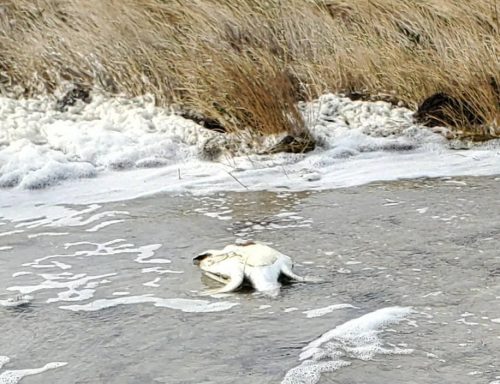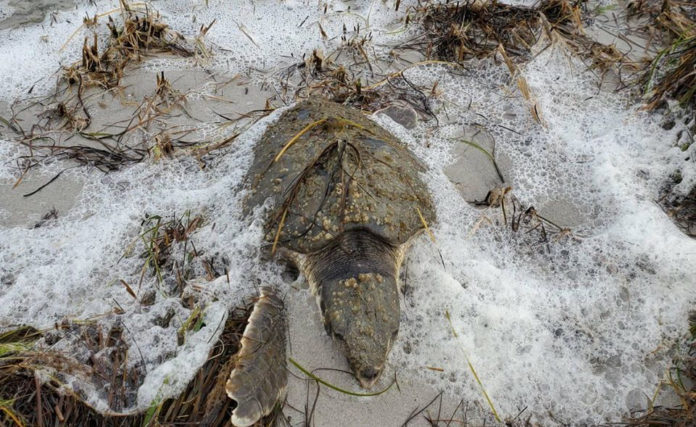The recent cold weather has effected more than just humans as dozens of sea turtles were rescued after the cold spell on the N.C. coast. Nearly 100 cold-stunned sea turtles were found along the North Carolina coast on Tuesday after two days of cold temperatures hit the Southeast coast of the U.S.
89 sea turtles were transported to the Network for Endangered Sea Turtles Rehabilitation Center at the N.C. Aquarium on Roanoke Island after a coordinated effort by local and northern Outer Banks volunteers.
According to a report published on Tuesday, Frank Welles, NEST Hatteras Island Coordinator, said that during this recent cold-weather event, several dozen volunteers headed to the Pamlico Sound waters to look for the sea turtles that were impacted by the cold.

Eight or nine sea turtles were recovered on Monday afternoon when air temperatures dropped to the mid-30s for the majority of the day, but it was Tuesday that brought the most activity, and which resembled the “Turtle Apocalypse” of 2016, where volunteers recovered 250 turtles in two days due to freezing weather conditions.
“It’s the biggest day we’ve had since 2016 during that massive event,” said Welles. “I don’t think we’ve had this many since then. In December, we were just over 100 [rescued turtles], but that took three days. Today, we had at least 89 in a single day.”
As cold-blooded reptiles, sea turtles derive heat from their surroundings, and when they become too cold, their metabolism slows, prohibiting them from moving and ultimately from migrating to warmer waters. This cold-stunned scenario can turn deadly, as once in an immobile and lethargic state, the sea turtles can have difficulty raising their heads above water to breathe, and can eventually drown.
They kept coming and coming
“One of the curiosities this time is they were washing in as we walked the beaches,” said Welles. “We’d turn around after stopping at the car, and there’d be another one washing up that wasn’t there moments before.”
Once a sea turtle is found, volunteers determine the type of turtle and its condition, and they also measure the turtle and provide its location before transportation to a rehab center. They eventually recover and are returned to the local shoreline.
It’s a tough and continual job, especially considering how hard volunteers worked on Tuesday, but by that same afternoon, Welles reported that all of the roughly 89 turtles recovered had already been processed.
They don’t like the cold either
Sea turtles are reptiles, relying on external sources of heat to maintain their body temperatures.
When turtles are cold stunned, usually when water temperatures reach 50 degrees and below, they will experience a decrease in heart rate and circulation causing them to become lethargic. Cold stunning may lead to shock, pneumonia, frostbite, and potentially death, as they are not able to migrate to warmer waters.
It’s no wonder there were dozens of sea turtles rescued after cold spell on N.C. coast.
With the help of many groups, cold stunned sea turtles can be transported to a rehab facility, placed in a dry tub and evaluated for any other existing health concerns. They will be warmed up slowly and, when appropriate, placed in water and closely monitored by rehab staff.










